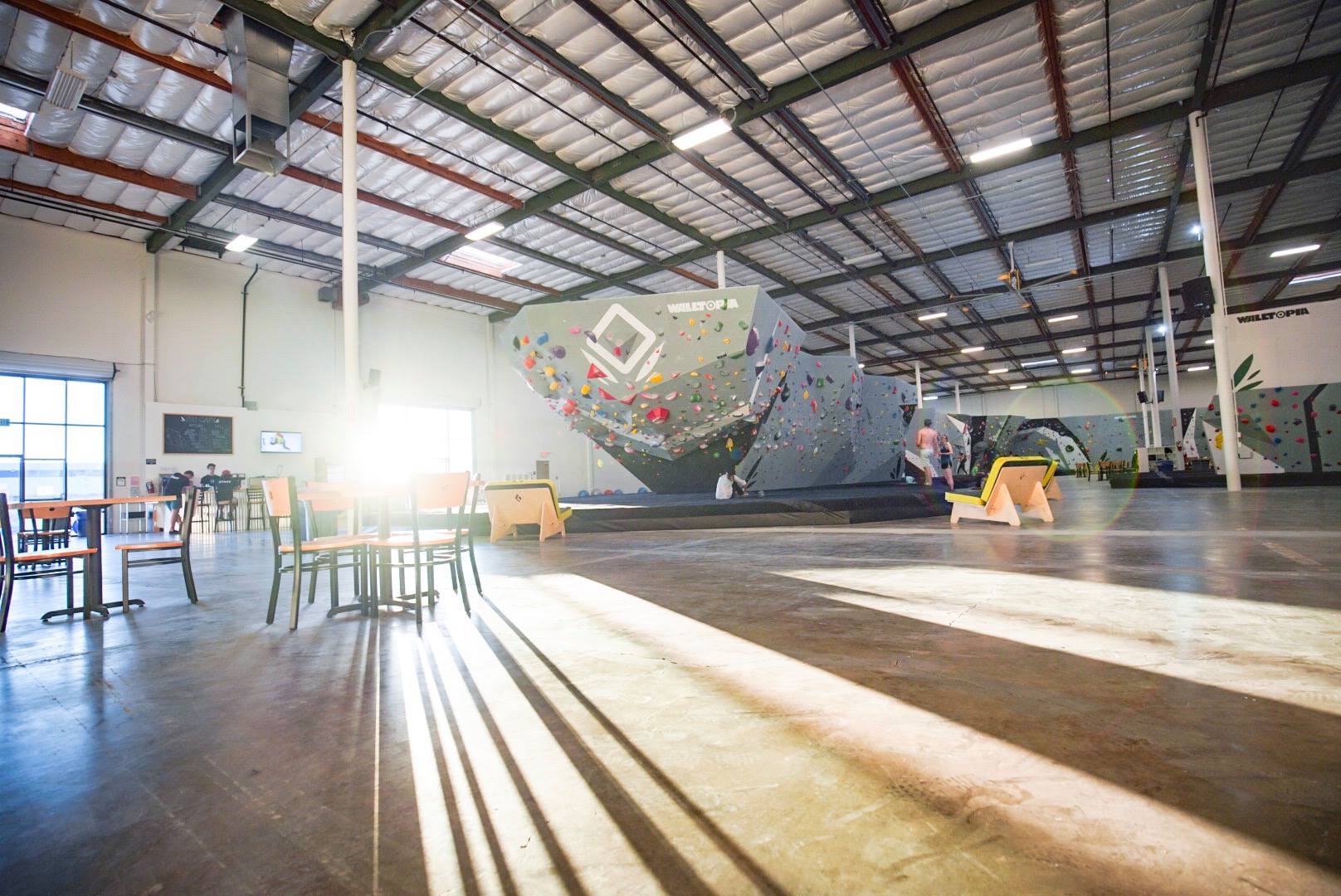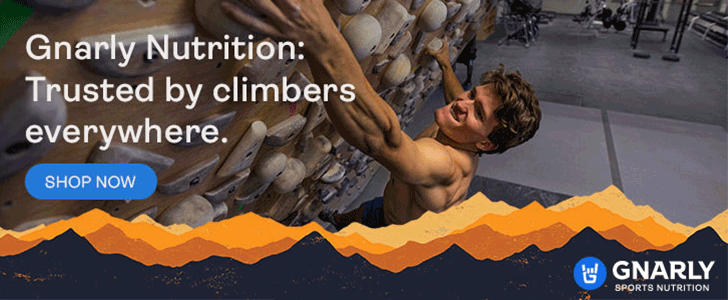This story is the first chapter of a five-chapter series on Professional Routesetting: The Truth Behind the Trade by Dave Wetmore.
Read More Chapters of Truth Behind the Trade
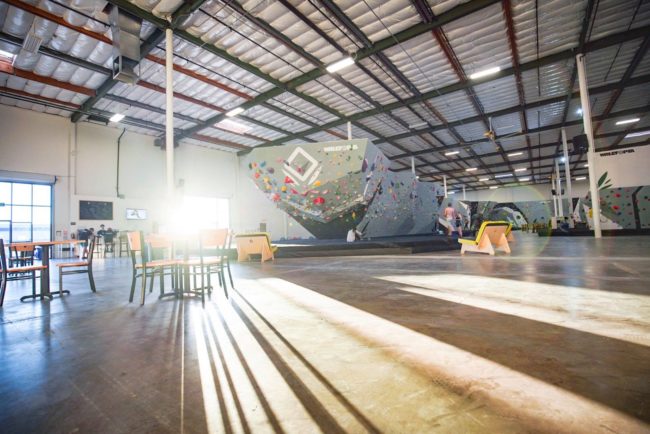
In the spring of 2018, after nearly two decades of full-time commercial and competition routesetting, Carlo Traversi offered me the Head Setter position―an absolute dream job―at his new facility, The Boulder Field, in Sacramento, California. I stepped into the role more excited than a kid at a candy store.
The place has everything you could ever ask for as a boulderer: over 300 problems sprinkled throughout 10,000 feet of uncrowded terrain, a 120-foot-wide make-up wall, Moon Board, Tension board, a full-service bar, saunas, yoga rooms, and a training area. With Tahoe, Yosemite and Bishop close by, what more could you ever need?
I thought I had it all. But after just a few years of working there, I noticed something was off.
Last summer, on a lazy Friday morning, I slowly hauled out our hold selection―a monstrous stack of trays with monochromatically organized holds―and began to strip a new section. After just a few steps of drearily dragging my feet across the concrete floor, I stopped in my tracks and stood still, staring blankly around the gym, as if trapped like a fly on the wrong side of a screen.
I felt numb, eyes glossed over, like some kind of dormant gym-climber zombie. A deep, inescapable boredom had hijacked my spirit. I felt like one of those spinning tops you twist and drop and watch it spin like crazy before it loses balance and wobbles out of control. I was lost in the never-ending rat race of stripping holds, washing them, and putting them back up in a different corner. Just another invisible cog in a perpetually turning wheel.
I’m 36 years old and I didn’t even see it coming.
You’re Not the Only One―Trust Me
I don’t know how it happened so fast, but I got old, or at least it feels that way as a setter. I know I’m not the most ancient one out there, but I still feel a bit oldish to be slinging grips day in and day out.
I started thinking about how many hours I had spent staring at blank surfaces; about how many holds I had screwed into the walls in front of me and into the walls of other gyms, in other states, in other countries, with other people; and about how many more holds I would take down and put back up before the decade was done―all the while setting one variation slightly different, but still the same, from the other. I realized no matter how many grips and volumes I washed, there would always be more. And no matter how many boulders I set, I would always need to create more.
It was a strange, heavy moment, as if I were watching my entire setting career unfold before my eyes before it even happened.
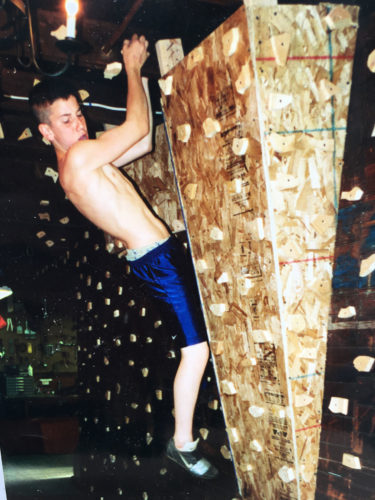
I started routesetting in middle school inside a shed attached to the side of our house in a suburb a few minutes north of Boston, Massachusetts. I screwed logs and pieces of particle board onto the siding. I didn’t have climbing shoes, so I cut the spikes off my soccer cleats and duct taped the toe box. Eventually, I made it to the local rock gym and my interest in the sport exploded. I’ve climbed in Australia, South Africa, Spain, Sardinia, and lots of different places throughout the US. When I first started, I wanted to be a professional rock climber. In the early 2000’s, I climbed a few 5.14’s, several V13’s, even one “soft” V14. This is nothing by today’s professional standards―even back then.
Nonetheless, I was the teenager that turned into an early-20-something-year-old at the gym that just wouldn’t go home.
The owner asked me to start putting up routes. So, I became a “routesetter”―just sort of fell into the trade. And I don’t bring it up to lament. Instead, I want to make that evolution clear because I think it’s important to see that my passion for climbing has served as a crucial platform for my growth as a setter. I think it’s important to be interested in movement for the sake of movement before becoming the person in your community that creates the movement.
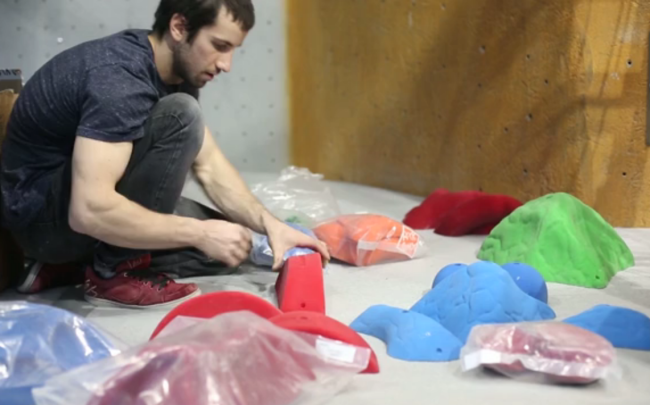
From 2009 to 2018, I was the Director of Routesetting for MetroRock, a chain of five gyms located throughout New York, Massachusetts and Vermont. During those years, I set boulder, lead and top-rope routes 40 hours per week, coached youth teams, and helped design a bouldering competition called the Dark Horse Series that drew in top professionals at the time and is somehow still running. These experiences in the commercial realm helped me understand things that no one was going to teach me, like how to set something decent even when you don’t feel like it, how to listen to feedback without it feeling like a jab in the gut every time, and most importantly how to hustle a middle-class living out of routesetting when most people were just getting by.
In addition to commercial work, I have set over a decade’s worth of USAC Youth Local, Regional and Divisional lead, top-rope and bouldering competitions for the New England region. These days, I set for the USAC National circuit, the North American Cup Series, and the occasional IFSC World Cup, in addition to other privately sanctioned events like the Portland Boulder Rally in Oregon, Dominion River Rock in Virginia, and once upon a time the Mexico City Youth PanAm Champs―a traumatic, yet valuable experience I’ll never forget. On the side, I enjoy guest setting with other local gyms and teaching clinics with USAC, or independently when the opportunities arise.
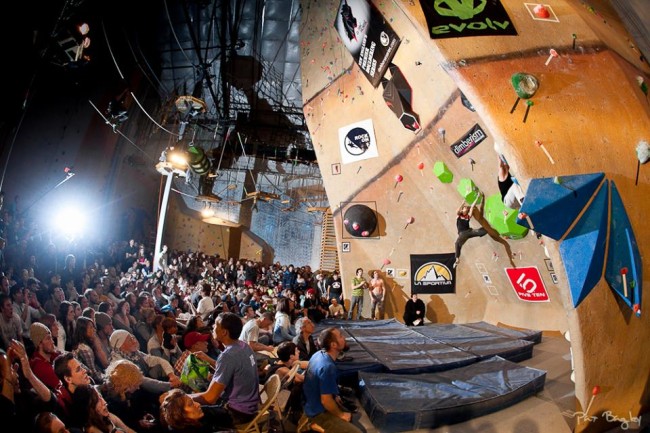
Somedays though, despite being a USAC Level 5 National Chief Routesetter and USAC L1 and L2 clinic instructor, I feel no more accomplished than someone with a PhD in grunt work, bodily injury, hold organization, and dead ends. I don’t mean to sound overly Orwellian, but over time―no matter how much you love routesetting―a certain bitterness can begin to swell under the skin of what amounts to an often thankless job.
During that existential moment of implosion, seasons seemed to blend and fade into the next as I completed the same mind-numbing task over and over and over again. Undercling. Sidepull. Gaston. Downpull. Jump. Catch. Stick. Press. Oh, you liked it? Cool.
What was most frightening about that revelatory morning was that I realized my setting job would never get any better. I work on my craft at arguably the best commercial bouldering gym in the country as far as I’m concerned, and the joint is only 4 years old. Completely fresh. The environment, the walls, the holds―they’re all top notch. I should be thinking, “I get to go to work here. I get to forerun today.” Instead, I was thinking, “I have to routeset. I have to forerun.” Maybe someday I’ll feel energized enough to actually go and do my own climbing, but probably not this week, or this month, or even this year.
My passion for the craft had cracked.
This crack had finally split into a crevasse that swallowed up my motivation to create, or even climb. I grew bored and disconnected, just wading through the daily monotony of the unstoppable and unconquerable plastic grip rotation. Trying to keep up with the demands of full-time setting is about as futile as a hamster running on its wheel: You are never done.
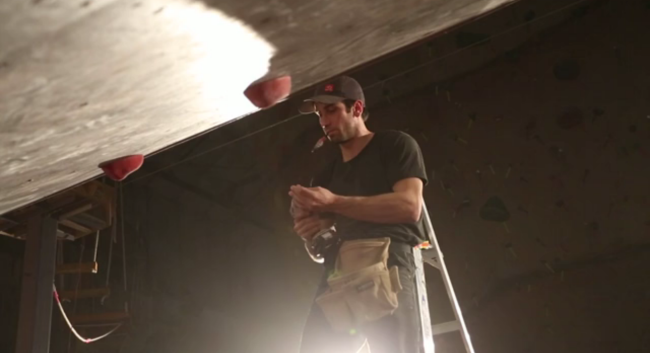
Sustainable Routesetting Careers Are Possible
Eventually I realized though that if I couldn’t make it here, I wouldn’t make it anywhere. It was on that day that I knew I needed to leave the routesetting industry forever or make a change―and quickly.
I began to think more critically: Why do I and other veteran setters keep routesetting? What do we continue to get out of it beyond a broken body and too small a paycheck? Surely, we are not all broken people. Even people that have been setting for thirty years still find joy in routesetting, right?
Despite my vendettas and gripes, I still think that setting, much like climbing, is a privilege and one I am grateful for. Continually giving back to a community that has given so much to me is a reward in and of itself. It’s just that I’ve been at it for quite some time.
Some days I wake up and can hardly believe I get to go play in a gym all day and get paid for it. But describing it as fun after almost two decades in the industry doesn’t really sum it up. It can be a brutal job that deprives you of your passion for climbing and leaves you feeling like a 100-year-old bag of bones more apt to do yoga in the backyard than get psyched to session out at the crag.
But things have changed.
My narrative is an old one, a played out record that many people are tired of listening too. I like to think that the future of climbing in rock gyms is bright and fruitful. You can do it. People do it. There is light at the end of the tunnel. It’s possible to carve out your niche in the routesetting world. The money is already way better, PTO is growing, medical benefits are solid, schedules are flexible, and paid educational opportunities continue to ramp up.
However, to paint a portrait of the setting industry without revealing the less-than-ideal side of things would be a false representation of my experience. It is my goal to explore the Yin and the Yang of routesetting, the negatives versus the positives, and examine the ever-changing phases of a routesetter’s career, and how setters can find ways to adapt their skills as they age. Basically, earning a living as a full-time routesetter may seem appealing for a time, but the reality of staying motivated over the long-term is much more complicated than one might think.
After a year away from the conveyor belt of climbing creation due to the pandemic-related gym closures, I finally figured out what I had been missing: teaching opportunities; working with others outside of the in-house domain; modified seasonal schedules; re-establishing roles and responsibilities; and most importantly finding time to indulge in other imaginative outlets that protect and foster the integrity of one’s spirit, the creative fabric that holds the entire operation together. But like journeys so often are in life, my relationship to routesetting work is a winding one and doesn’t end there, so I hope you’ll stick around for the full ride―and the detours along the way.
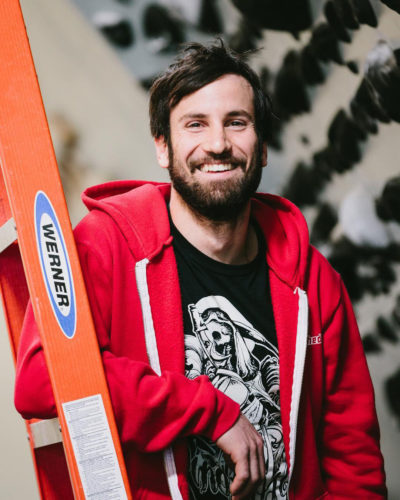
In a multi-part column here with Climbing Business Journal, we’ll be releasing a series of essays that explore my path of progression within the industry―from getting paid $30 per route to receiving my first salary with benefits and paid time off as a professional routesetter. More importantly, these stories will examine the gaps between the trained and the untrained, the well paid and the underpaid, and finally what I think are more sustainable commercial routesetting models.
Each essay will shed some light onto the feelings, thoughts and opinions of those who have taught me along the way and helped shape my view of the trade. The following interviews represent a mere fraction of the industry, and help to both vindicate and refute my arguments.
I don’t think I’m the best, the fastest, the strongest or the most creative routesetter out there―not by a longshot. But what I can tell you is that I’ve been trying really hard at routesetting and climbing for close to 20 years and my ideas are founded upon honest to goodness blood, sweat and tears.
Read More Chapters of Truth Behind the Trade
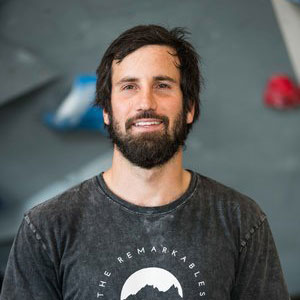
In the early 2000’s, Dave started screwing things to the walls inside of his shed. Two decades later, he is still doing the same thing, only on slightly nicer walls with more advanced materials. After studying journalism at the University of New Hampshire, he unwittingly fell into the then emerging trade of routesetting. These days, he fancies himself a writer and hopes that his stories might help others shift their perspective or share a laugh, or both. Dave is currently the head setter of The Boulder Field in Sacramento, California, and has been published in Climbing, Rock and Ice, Experience, and Urban Climber, among others.




